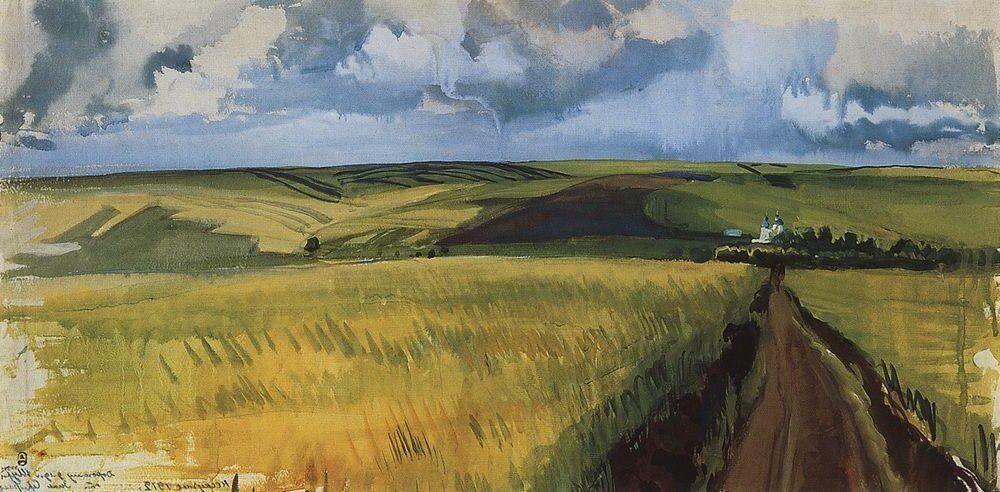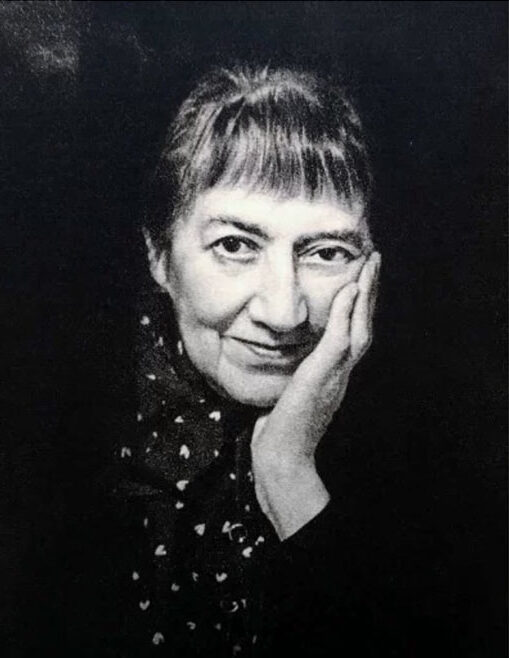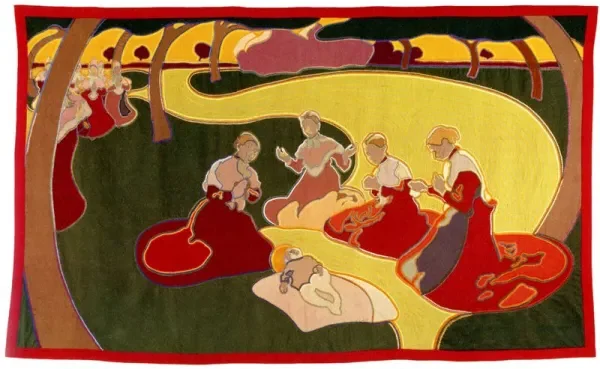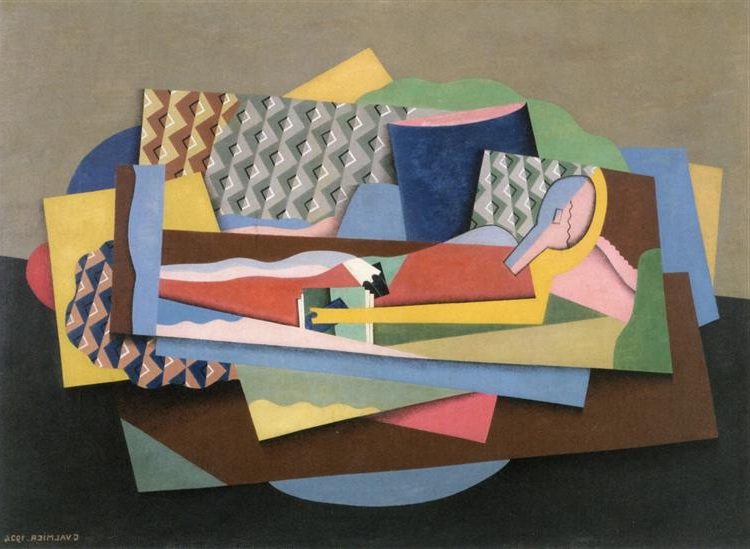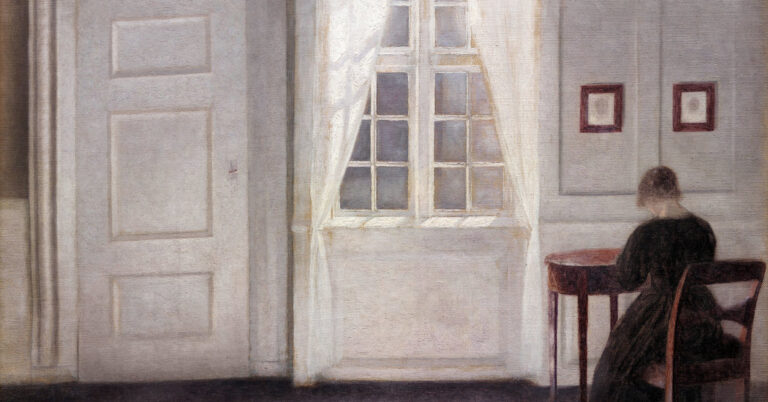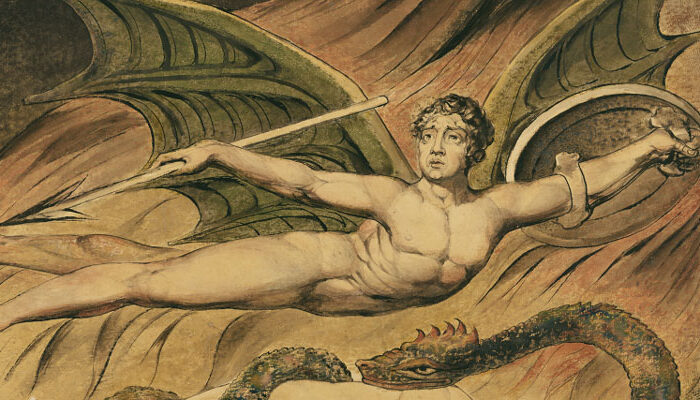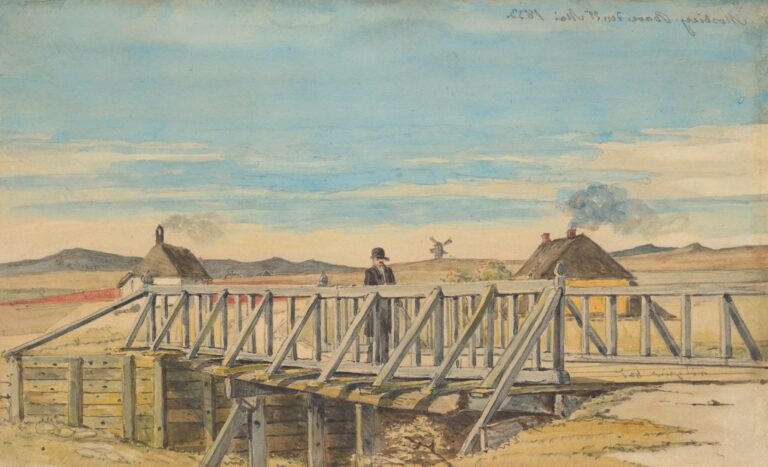Zinaida Serebriakova: Pioneering Russian Female Painter of the Early 20th Century
Born: 10 December [O.S. 28 November] 1884
Neskuchnoye, Kursk Governorate, Russian Empire
Death: 19 September 1967, Paris, France
Art Movement: Representational, Neoclassical Revival, Mir iskusstva
Nationality: Russian, French (from 1947)
Teachers: Ilya Repin and Osip Braz
Institution: Princess Maria Tenisheva’s Art School, Académie de la Grande Chaumière
Zinaida Serebriakova: Pioneering Russian Female Painter of the Early 20th Century
Early Life and Artistic Heritage
Zinaida Serebriakova was born into a remarkable artistic dynasty on December 10, 1884. Her family background and early education shaped her distinctive artistic style that would later earn her recognition in the Russian art world.
Benois Family and Artistic Influence
Zinaida was born Zinaida Yevgenyevna Lansere on the Neskuchnoye estate near Kharkov in the Russian Empire. She belonged to the renowned Benois-Lanceray artistic dynasty. Her grandfather was Nicholas Benois, a notable architect, and her uncle was Alexandre Benois, a prominent figure in Russian art.
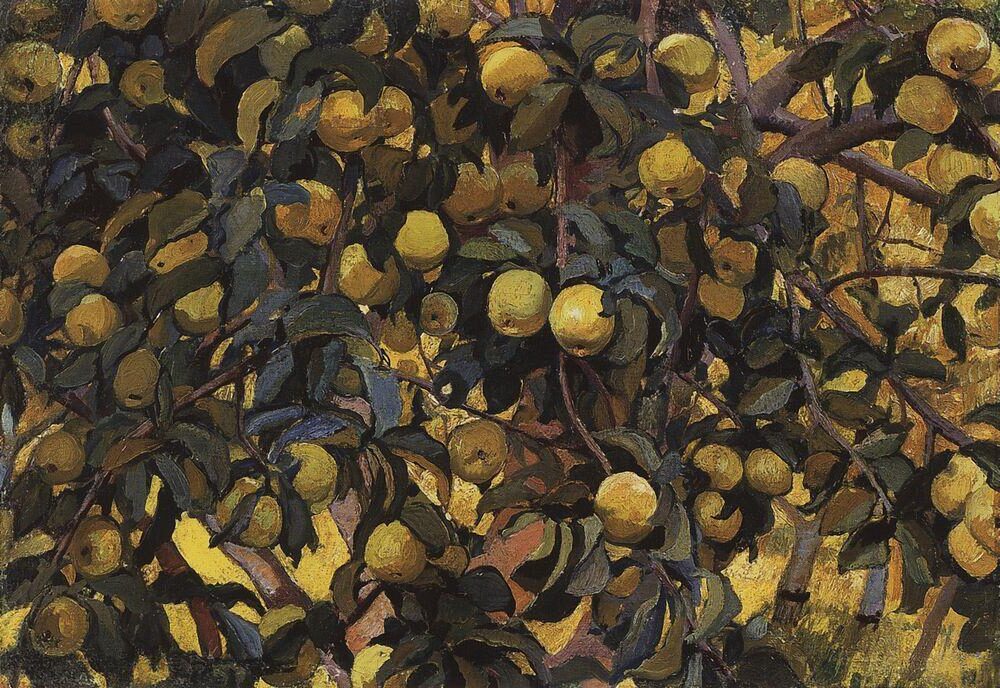
Apples on the Branches, 1910, by Zinaida Serebriakova
This family environment immersed her in artistic traditions from childhood. The Benois family had significant influence on Russian cultural life during the Silver Age. Their artistic legacy provided Zinaida with a strong foundation and appreciation for various art forms.
Growing up surrounded by creativity shaped her aesthetic sensibilities and technical approach to painting. Her family’s artistic heritage can be seen in her work’s refined technique and classical influences.
Education and Early Works
Serebriakova’s formal art education began at Princess Tenisheva’s private art school, where she studied under Ilya Repin, one of Russia’s most celebrated painters. She graduated from Kolumna in 1900, marking the beginning of her artistic journey.
Her early training reflected both traditional Russian painting techniques and newer European influences. This combination would become a hallmark of her distinctive style.
Serebriakova’s early works demonstrated her natural talent for capturing light, composition, and human expression. She developed her skills during a pivotal time in Russian art history, when the Silver Age brought innovation and new artistic movements.
Her education in Moscow and exposure to various artistic trends helped her develop a personal style that was both modern and classically informed.
Artistic Career and Evolution
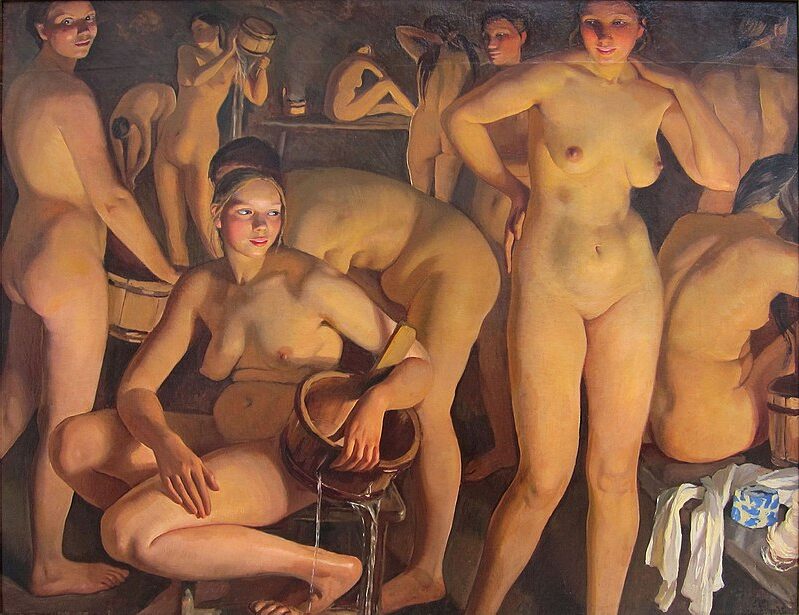
Bath-house, 1913, by Zinaida Serebriakova
Zinaida Serebriakova’s artistic journey spanned decades and multiple countries, evolving from her Russian roots to a more international style while maintaining her distinctive vision and technique.
Rise in the Russian Art Scene
Serebriakova began her formal artistic training at a women’s gymnasium, graduating in 1900. She later studied under portrait painter Osip Braz in St. Petersburg, where she developed her foundation in portraiture and composition.
Her breakthrough came in 1909 when she created her iconic “Self-Portrait at the Dressing Table” (also known as “At the Toilet”). This painting, showing the artist’s reflection as she prepares herself, demonstrated her remarkable skill and unique perspective.
Born into the influential Benois-Lanceray artistic dynasty, Serebriakova benefited from early exposure to art. Her family’s estate at Neskuchnoye became a nurturing ground for her talent, surrounding her with artists, musicians, and creative influences.
World of Art Association
Serebriakova became affiliated with the prestigious “Mir Iskusstva” (World of Art) association, a group that shaped Russian modernism in the early 20th century. This connection helped establish her prominence in the Russian art world.
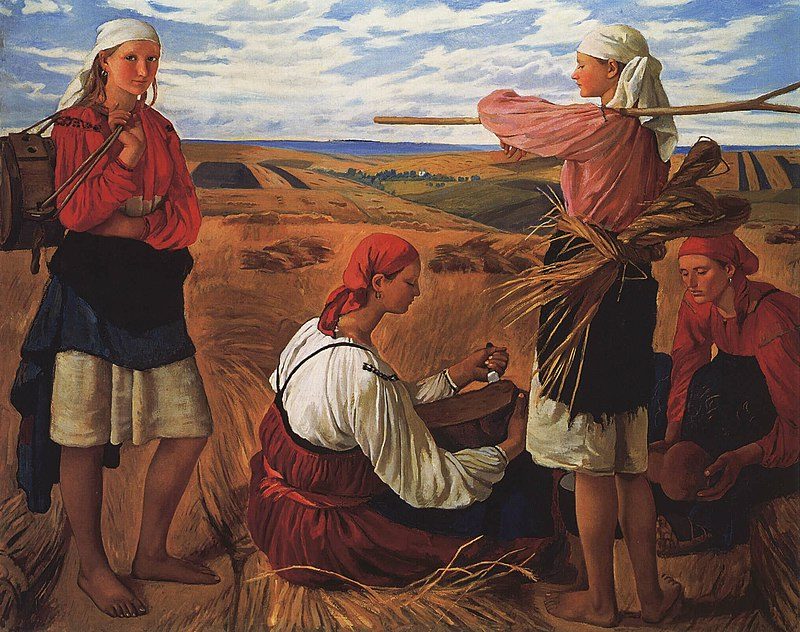
Harvest, 1915, by Zinaida Serebriakova
The World of Art valued beauty, craftsmanship, and drew inspiration from both Russian traditions and European movements. Serebriakova’s work aligned with these principles while maintaining her distinctive style.
Her participation in World of Art exhibitions brought her work to wider audiences. She exhibited alongside other significant Russian artists, gaining critical recognition for her fresh approach to traditional subjects.
Despite her association with this forward-thinking group, Serebriakova remained somewhat apart from radical avant-garde movements, preferring to develop her own harmonious aesthetic.
Development in Painting Techniques and Styles
Serebriakova’s technique reflected influences from Renaissance masters like Botticelli and Impressionists like Renoir, while maintaining her unique vision. She worked primarily in oil paint, creating luminous surfaces with careful brushwork.
Her style evolved from the Russian realistic tradition of Venetsianov, especially in her depictions of peasant life. She brought sensitivity and dignity to these subjects, avoiding sentimentality or exploitation.
After leaving Russia in 1924, her palette and approach shifted somewhat. Her work in Paris introduced new subjects and slightly different techniques, though she maintained her fundamental artistic values.
She also experimented with monumental painting for theater designs and murals, demonstrating versatility beyond her more intimate works.
Notable Works
“Self-Portrait” (1909) remains Serebriakova’s most recognized masterpiece, showcasing her talent for capturing light, expression, and the feminine perspective. It hangs in the Tretyakov Gallery in Moscow.
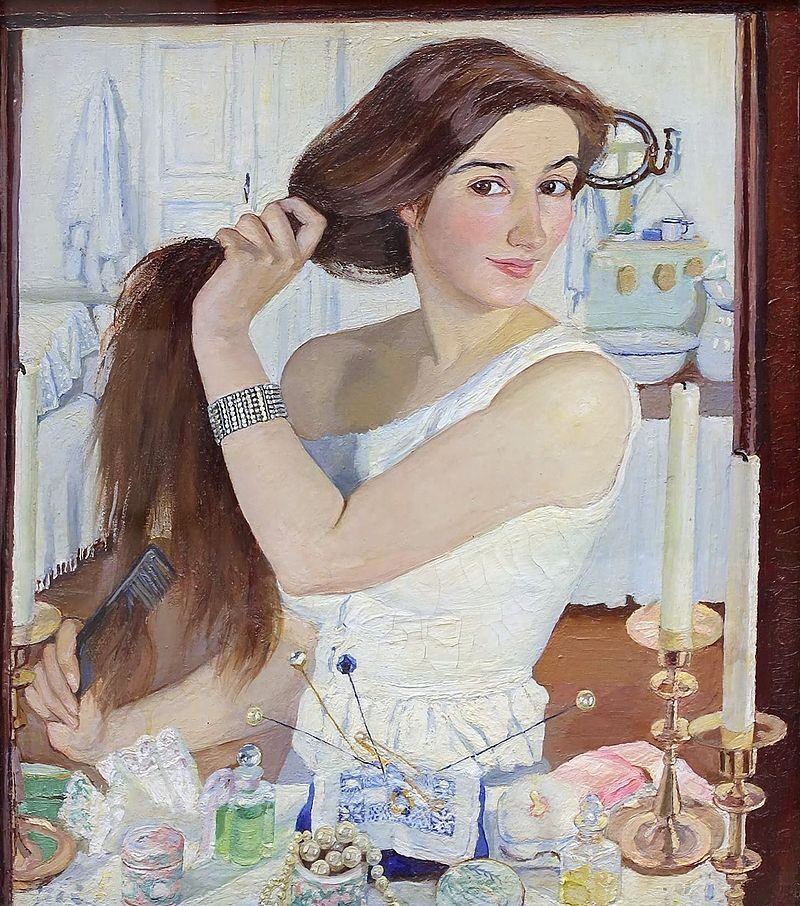
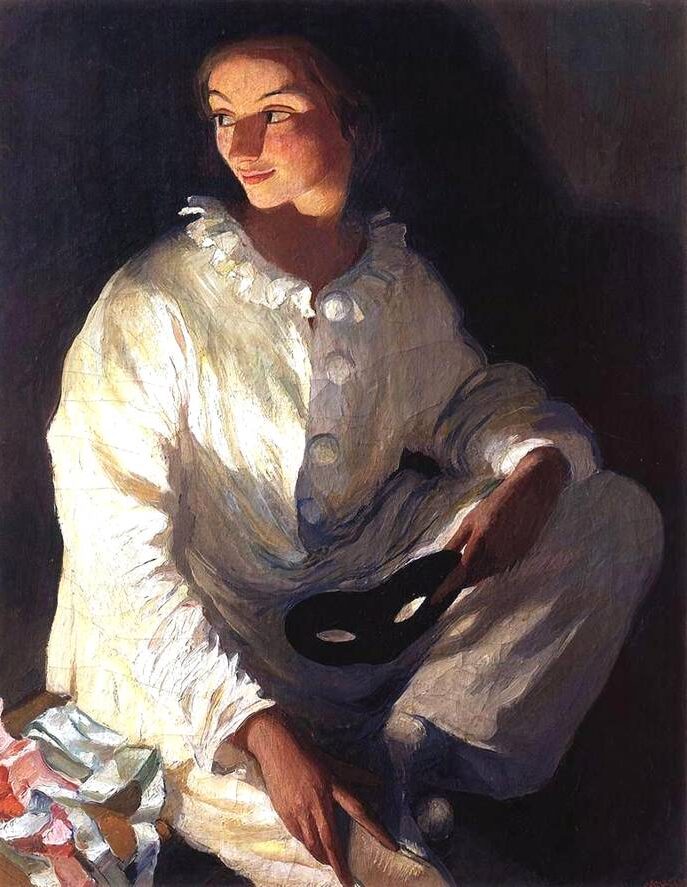
“House of Cards” (1919) depicts her children in a moment of innocent play, showcasing her ability to capture familial warmth during difficult times. This work demonstrates her gift for composition and emotional resonance.
Her “Harvest” and peasant series from the Neskuchnoye period reveal her deep connection to rural Russian life. These works capture the dignity of labor and the beauty of traditional customs.
Later works included numerous portraits, nudes, and scenes from her travels. Her ballet dancers series created in Paris shows her continuing interest in capturing movement, grace, and the human form.
Exile and Legacy
Zinaida Serebriakova’s life took a dramatic turn when she left Soviet Russia, spending most of her remaining years in France. This period marked both hardship and eventual recognition of her extraordinary talent as a painter.
Life and Challenges in Paris
In 1924, Serebriakova moved to Paris, hoping to establish herself in the art world and eventually bring her children from Soviet Russia. This separation from her homeland and part of her family brought significant emotional distress.
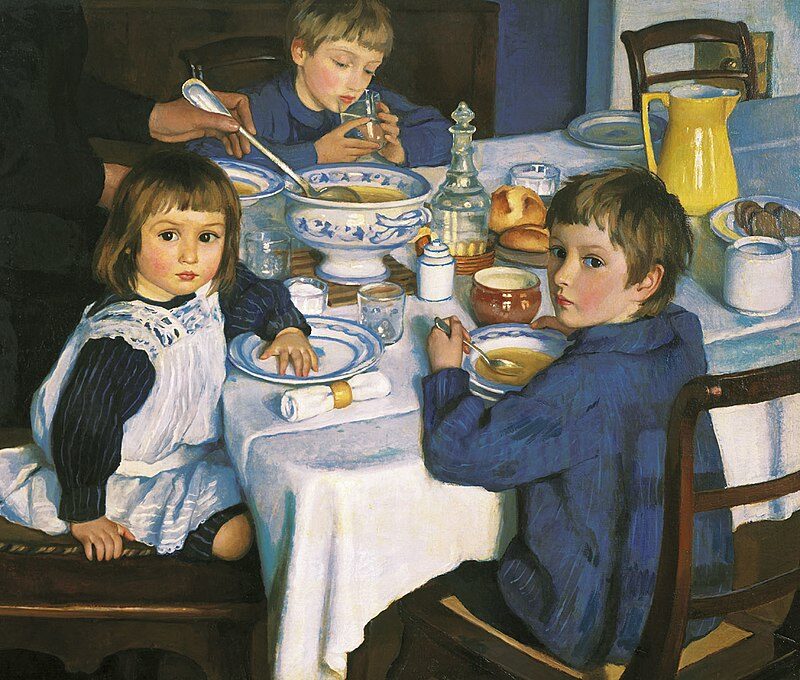
At Breakfast, 1914, by Zinaida Serebriakova
Financial struggles dominated her early Parisian years. She supported herself by taking commissions for portraits and murals. Despite studying at the Académie de la Grande Chaumière to refine her skills, recognition came slowly in the competitive French art scene.
Her work from this period often featured nostalgic scenes of Russian life and intimate portraits that captured human emotion with remarkable sensitivity. She continued working in various media including oil, charcoal, and pastel.
Recognition and Final Years
By the 1930s, Serebriakova began gaining recognition in France and beyond. She participated in exhibitions showcasing Russian émigré artists, gradually building her reputation in Western Europe.
In 1947, she obtained French citizenship, providing security after years of stateless existence. This period saw her creating some of her most memorable works, including portraits and scenes of rural France that echoed her earlier Russian paintings like “Bleaching Cloth.”
After World War II, she was briefly able to reunite with her daughter who visited from the Soviet Union. In her final years, Serebriakova continued painting despite declining health, maintaining the luminous quality that characterized her work throughout her career.
Posthumous Influence and Exhibitions
Serebriakova died in 1967 and was buried in the Russian Cemetery at Sainte-Geneviève-des-Bois near Paris. Her legacy, however, continued to grow after her death.
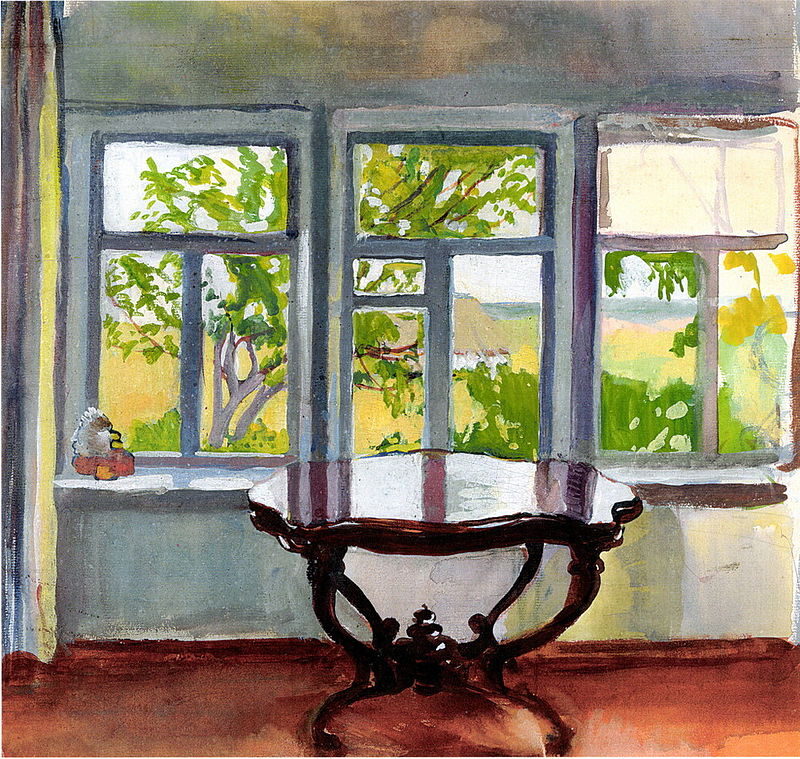
The Veranda in Spring, 1900, by Zinaida Serebriakova
The 1970s brought renewed interest in her work, particularly in the Soviet Union. Major retrospectives in Moscow and Leningrad (now St. Petersburg) introduced her art to new generations, celebrating her contributions to Russian painting tradition.
In her birthplace of Kharkov, Ukraine, a museum dedicated part of its collection to her work. Her paintings now command significant attention at international auctions and exhibitions.
Art historians recognize her as a bridge between classical Russian painting traditions learned from teachers like Repin and the modernist movements of the 20th century. Her delicate yet confident style, especially in portraiture, continues to influence contemporary artists working in traditional techniques.
Frequently Asked Questions
Zinaida Serebriakova’s artistic legacy prompts many questions about her techniques, influences, and contributions to art history. Her distinctive neoclassical style and personal journey from Russia to France shaped her unique artistic perspective.
What are the most notable themes in Zinaida Serebriakova’s artwork?
Serebriakova frequently portrayed rural Russian life, capturing peasants and countryside scenes with remarkable warmth and authenticity. Her work celebrated the beauty and dignity of everyday people, particularly women.
Family scenes formed another central theme, often depicting her children in intimate, tender moments that reflected her personal experiences as a mother.
Self-portraits stand out in her oeuvre, combining technical mastery with emotional depth. These works reveal both her artistic skill and inner world.
How did Zinaida Serebriakova contribute to the Russian art movement of her time?
As a member of the “World of Art” movement, Serebriakova helped revitalize Russian painting through her neoclassical approach. She rejected the avant-garde trends emerging in the early 20th century, instead pursuing representational art that celebrated beauty.
Her work bridged traditional Russian artistic values with modern sensibilities. This combination created a distinctive voice within the Russian art scene.
Serebriakova’s focus on female subjects, portrayed with dignity rather than objectification, represented an important feminine perspective in the male-dominated art world.
Which galleries or museums display Zinaida Serebriakova’s work?
The State Tretyakov Gallery in Moscow houses a significant collection of Serebriakova’s works, including some of her most famous paintings from her Russian period.
The State Russian Museum in Saint Petersburg features several important pieces by the artist, showcasing her contribution to Russian art history.
Outside Russia, the Centre Pompidou in Paris holds works from her French period. Various private collections worldwide also contain her paintings, though many remain in Russian and Ukrainian institutions.
What is the significance of Zinaida Serebriakova’s self-portraits in the history of art?
Serebriakova’s self-portraits stand among the most significant female self-representations in art history. Her 1909 work “At the Dressing-Table” (also known as “At the Toilet”) became an iconic image of female self-portraiture.
These works challenged male-dominated traditions of depicting women in art. She portrayed herself with agency and artistic confidence rather than as a passive subject.
Her self-portraits spanned her career, documenting her journey from young Russian artist to emigrant in Paris. This visual autobiography provides insight into both her personal life and artistic development.
How has Zinaida Serebriakova’s style evolved throughout her career?
Serebriakova’s early work was characterized by luminous colors and optimistic themes reflecting her comfortable pre-revolutionary life. Her Russian period featured rural scenes and intimate family portraits with technical precision.
Following her emigration to Paris in 1924, her palette became more subdued. Financial necessity led her to focus on commissioned portraits and exotic subjects from her travels to North Africa.
Despite changing circumstances, she maintained her commitment to representational art throughout her life. Her technical approach remained rooted in academic training while her subject matter adapted to new environments.
Could you provide some insights into Zinaida Serebriakova’s ‘At the Dressing-Table’ painting?
“At the Dressing-Table” (1909) represents Serebriakova’s breakthrough work, combining technical skill with intimate self-revelation. The painting shows the artist at her morning toilette, smiling at herself in the mirror.
The composition demonstrates her masterful use of light. The white of her dressing gown contrasts against the darker background. Her reflected face conveys joy and self-assurance.
This painting established Serebriakova as a significant talent in the Russian art world. It exemplifies her ability to transform an everyday moment into a celebration of feminine beauty and vitality.

